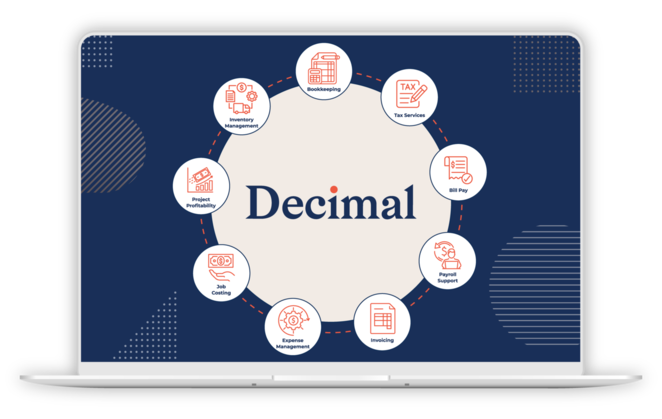Artificial intelligence (AI) has become one of the most discussed topics in finance and accounting. But while the buzz is loud, many firm owners echo a common frustration: "AI sounds nice, but is it really useful yet?"
It’s easy to educate ourselves about long-term potential, but harder to find tangible applications that deliver results right now. This article addresses that skepticism by exploring actionable ways AI-driven automations can transform your day-to-day accounting workflows without waiting for tech to mature.
As accounting firms face mounting pressure to maximize both efficiency and value, embracing practical tools powered by AI can be the unlock to faster execution and tighter compliance. Here are workable solutions, immediate benefits, and proven ideas that your firm can adopt today.
What’s shaping confidence around AI adoption?
A 2025 CFO survey of 500 senior finance executives highlights both optimism and hesitations in AI adoption—a sentiment that many firm owners will recognize:
- While the promise is clear, adoption barriers exist: Nearly three-quarters of finance leaders cite significant challenges in implementing AI.
- AI skill-building is high priority: A striking 94% of respondents are implementing AI training for their teams.
- Growth confidence fluctuates: Events like the tariff shock in April remind us that AI isn’t just about automating tasks—it’s about proactive decision-making in times of uncertainty.
These insights validate how firms need actionable frameworks, not abstract promises, to confidently adopt AI successfully.
AI in action: practical automations you can implement today
Effortless expense management: fully automated and ERP-ready
Managing expenses is one of the most repetitive and error-prone tasks that accounting firms handle daily. With the right tools, expense management can be hands-off—fully automated from when a transaction occurs to when it’s synced with your ERP system without manual intervention.
How to simplify:
- Automated preparation and categorization: From the moment an employee swipes a card, expenses can be tagged based on predefined rules for fields like merchant codes, spend category, and historical patterns.
- Policy compliance baked into approvals: AI reviews all transactions against your expense policies in real-time, flagging anything out of policy to be addressed.
- Ready-to-report automation: Once approved, transaction codes are applied automatically, pushing clean, reconciled data straight to your ERP.
Automatic policy enforcement: save time without missing details
Policy compliance is often a tedious back-and-forth process between employees and accounting teams.
Practical implementation:
- Set granular spending policies upfront, then automate the review of expenses against your policies by creating custom rules.
- AI flags non-compliance while allowing automated approvals for transactions that pass predefined rules.
- Set required accounting fields to ensure that expenses are coded with the necessary information before going to the ERP so you’re 100% confident about your exports.
Out-of-policy transactions can be dealt with instantly, reducing the need for retroactive reviews and missed enforcement—a crucial benefit for firms managing large teams.
Accurate transaction coding without human input
Manual transaction coding drains productivity and introduces error risk. You can address this pain point with accounting automation tools optimized for spend categorization:
What’s different with the right features:
- Auto-code expenses before transactions happen: Set up rules for how you want card transactions to be categorized or coded. When the card is swiped, AI will automatically tag the transaction in the correct fields you set, eliminating the need for any manual coding to prepare expenses for export.
- Smarter AI suggestions improve over time: AI learns your firm’s unique spending patterns, suggesting auto-fill for fields like project codes automatically with high confidence so you don’t have to scroll through tedious drop-down menu searches.
Eliminating expense reports: new workflows for travel
Travel and expense (T&E) reconciliation is often the most painful bottleneck in workflows. Sophisticated firms can automate receipt matching to eliminate manual handling entirely.
Breakthrough T&E automation:
- Organized automatically: Receipts are generated instantly, memos filled, and expenses grouped by trip for easy review and approval. No manual uploads, corrections, or chasing employees for details.
- Expense report-free workflows: Accounting teams can forego traditional expense reports thanks to synced, error-free reconciliations that work out-of-the-box.
Beyond efficiency: predictive analytics for smarter decisions
Proactive financial management is the future of AI implementation. By analyzing historical data, AI tools now allow accountants to make smarter strategic decisions before issues arise.
Where actionable analytics matter most:
- Forecast cash flow trends based on AI-powered insights on company spending patterns.
- Receive early alerts for overspending, budget deviations, or operational vulnerabilities.
- Drive advisory services backed by hard metrics tracked across your entire company’s spend in one place – from card transactions to travel reimbursements to bank accounts – positioning your firm as future-focused.
Revolutionizing accounting through automation
The overarching promise of AI isn’t to replace accounting teams—it unlocks greater speed and control in routine workflows, enabling firms to deliver deeper insights and higher value to clients. Features like auto-enforced policies, pre-coded expenses, error-free reconciliations, and predictive analytics shift your team’s focus away from manual oversight toward strategic impact.
Adopting automation tools doesn’t just save time—it ensures confidence. By reducing mistakes, streamlining day-to-day processes, and enabling tighter compliance, accounting firms remain better equipped to help their clients navigate evolving financial landscapes.
Legal disclosure
The impact metrics mentioned in this article were provided by Brex and cannot be referenced outside this post without written permission. Numbers shown are proprietary to Brex’s internal research.
Sponsored Content: This article is generously brought to you by one of our valued sponsors. Their support enables us to continue delivering expert insights and the latest industry trends to our dedicated community of accounting professionals.
.png?width=150&height=63&name=TWRlogo-regmark_blueblack%20(1).png)
.png)


.jpeg)







Do you have questions about this article? Email us and let us know > info@woodard.com
Comments: